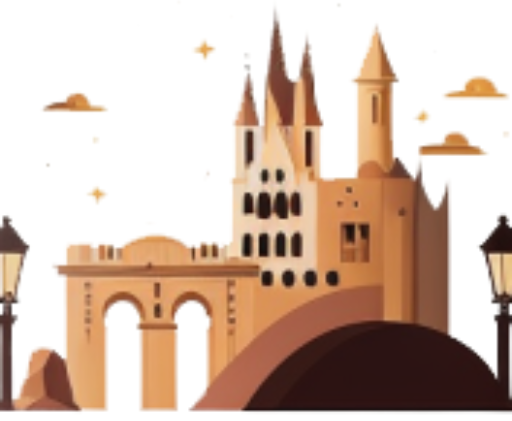Europe’s rail network weaves together breathtaking landscapes, historic cities, and cultural gems, making train travel a top choice for explorers seeking sustainable and scenic adventures. From alpine peaks to coastal cliffs, the continent’s trains deliver experiences that rival any flight or road trip. This guide explores the best train travel routes in Europe, offering practical tips and inspiring itineraries to plan your next rail journey.
Why choose train travel in Europe?
Train travel in Europe combines convenience, eco-friendliness, and charm. High-speed services like Eurostar and TGV connect major capitals, while regional and scenic routes showcase hidden corners of the continent. Trains allow you to relax, enjoy the view, and avoid the hassles of airports or car rentals. With new sleeper services and expanded routes in 2025, there’s never been a better time to hop aboard.
Eco-friendly and sustainable
Rail travel produces significantly lower carbon emissions than flying or driving. For example, a train journey from Paris to Amsterdam emits about 80% less CO2 than a flight. Choosing trains aligns with growing demand for sustainable travel, letting you explore Europe responsibly.
Comfort and flexibility
Modern European trains feature spacious seating, Wi-Fi, dining cars, and even private sleeper cabins. Flexible ticketing options, like Eurail passes, let you customize your route and hop off at charming stops along the way.
Top 5 scenic train routes in Europe
Europe’s rail routes range from dramatic mountain passes to serene coastal stretches. Here are five of the best train journeys for 2025, each offering unique views and experiences.
Glacier Express: Switzerland’s alpine masterpiece
The Glacier Express, running between Zermatt and St. Moritz, is a 7.5-hour journey through Switzerland’s Alps. Known as the “slowest express train in the world,” it crosses 291 bridges and 91 tunnels, passing snow-capped peaks, deep valleys, and the iconic Landwasser Viaduct. Book a panoramic Excellence Class seat for floor-to-ceiling windows and gourmet dining.
Bernina Express: Switzerland to Italy
This 4-hour route from Chur, Switzerland, to Tirano, Italy, climbs the Bernina Pass at 7,400 feet. Expect jaw-dropping views of glaciers, lakes, and the Brusio spiral viaduct. The train’s red carriages contrast vividly against the alpine scenery, making it a photographer’s dream.
West Highland Line: Scotland’s rugged beauty
Travel from Glasgow to Mallaig on Scotland’s West Highland Line, a 5.5-hour trip through lochs, moors, and the Glenfinnan Viaduct, famous from Harry Potter films. The route ends at the coastal village of Mallaig, where you can catch a ferry to the Isle of Skye.
Gotthard Panorama Express: Swiss-Italian gateway
Linking Lucerne to Locarno, this 5-hour journey combines a boat ride on Lake Lucerne with a train through the historic Gotthard Tunnel. You’ll see spiral tunnels, palm-lined lakeshores, and the dramatic Ticino region, blending Swiss precision with Italian flair.
Douro Line: Portugal’s river valley
The Douro Line, from Porto to Pocinho, is a 3.5-hour ride along Portugal’s Douro River. Vineyards, olive groves, and terraced hillsides frame the route, offering a glimpse into the heart of port wine country. Stop in Peso da Régua for wine tastings.
Practical tips for the best train travel in Europe
Planning a European rail adventure requires a few smart strategies to save money and maximize enjoyment. Here’s how to make your journey seamless.
Book tickets early for savings
Train tickets in Europe are often cheaper when booked 12 weeks in advance. Platforms like Trainline or Omio allow you to compare prices across operators. For example, a Paris-Berlin high-speed ticket can cost as little as €60 if reserved early.
Consider a rail pass
Eurail and Interrail passes offer unlimited travel across multiple countries for a set period. A 10-day Global Pass starts at €283 for adults, ideal for multi-country itineraries. Check reservation fees for high-speed trains, which can add €10-20 per trip.
- Eurail Global Pass: Covers 33 countries, flexible travel days.
- Interrail Pass: For European residents, similar benefits.
- Single-country passes: Cheaper for focused trips, like Italy or Switzerland.
Pack light and plan connections
Trains have limited luggage space, so stick to a carry-on bag. When changing trains, especially in Paris or Brussels, allow at least 30 minutes for transfers. Apps like Rome2Rio help map out connections.
Sample 10-day train itinerary
To inspire your trip, here’s a 10-day itinerary covering some of Europe’s best train routes and cities.
| Day | Destination | Train Route |
|---|---|---|
| 1-2 | Paris, France | Start in Paris |
| 3 | Brussels, Belgium | Eurostar (2h) |
| 4-5 | Berlin, Germany | European Sleeper (12h overnight) |
| 6-7 | Zurich, Switzerland | TGV Lyria (8h) |
| 8-10 | Milan, Italy | Gotthard Panorama Express (5h) |
This itinerary blends vibrant cities with scenic trains, including an overnight sleeper to save time. Adjust stops based on your interests, adding day trips like Lake Bled from Zurich or Verona from Milan.
New train routes to watch in 2025
Europe’s rail network is expanding, with new high-speed and sleeper services launching in 2025. A direct Paris-Berlin daytime train (8 hours) starts at €60, while Nightjet’s Paris-Vienna sleeper offers cozy cabins from €30. Keep an eye on Trenitalia’s Paris-Milan route, which now runs twice daily in under 7 hours.
Streamlined booking systems
A single-ticket system for long-distance trains is in development, simplifying cross-border bookings. Until then, use apps like Trainline or Rail Europe for multi-operator tickets.
Final thoughts on European train travel
Train travel in Europe unlocks a world of scenic beauty, cultural richness, and sustainable exploration. Whether you’re gliding through the Alps on the Glacier Express or tracing Portugal’s Douro Valley, these journeys create lasting memories. Plan early, embrace flexibility, and let Europe’s rails guide you to unforgettable destinations. Start your adventure today and discover why train travel is the best way to see Europe in 2025.

